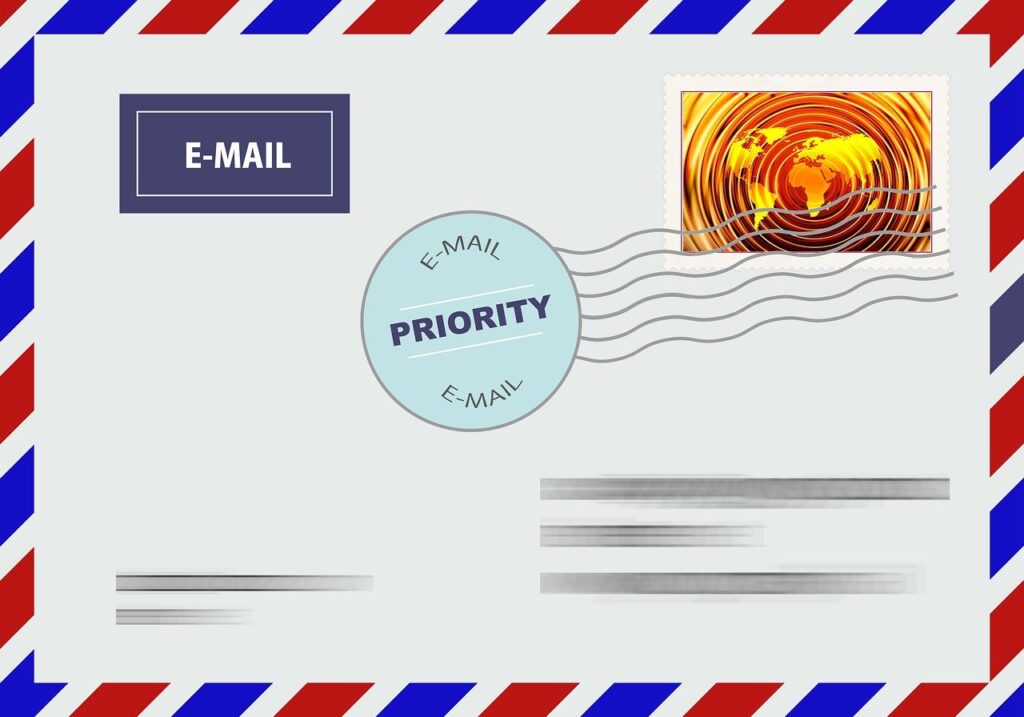How To Grow Your Email List

Now that you’ve created and made multiple freebies and gave your audience multiple entry points to your list, you can focus on growing your list. When growing your list, remember that gaining more traffic is not the only goal. Attracting highly targeted traffic, full of people who want and need what you’re offering, is the goal. Therefore, you need to develop a list-growing strategy that uses tactics that focus on your goal: Building and Growing a Responsive List.
The following tactics will ensure that when someone joins your list they really do want the information you’re providing, and will likely turning into a paying customer if you’ve matched your freebie opt-in offers to the right audience and with the idea of promoting specific products and or services to them. So, let’s build that traffic.
Create a User-Friendly Site
First and foremost, everything begins and ends with your website. If your website doesn’t look great, work fast, and doesn’t work on all devices you are likely missing out on numerous opportunities to connect with potential customers.
- Develop a Responsive Website – Using a responsive template is simple today but if you add images, always double check to make sure they resize and are positioned correctly on the screen. You can check by using Browserling.com, as well as your own mobile device, and other tools.
- Brand Your Website – You don’t want your audience to be confused when they visit your website. Keep your branding the same throughout your online real estate, from social media to your website, and everything in between. You can do this by using logos, fonts, colors, etc., to develop your branding so everything matches.
- Make it Easy to Contact You – You don’t want someone to have to dig around your website to find a way to contact you. Make it very easy by placing the contact info at the top and bottom of your site, as well as in the sidebar (if you have one). Visitors should be able to contact you easily, when needed.
- Create Simple Navigation – The rule of thumb with navigation is that less is more. Plan your navigation in advance to help create the right setup. Use labels on the navigation links that adequately identify what they’ll find there. Make sure your primary navigation stands out. This menu is usually at the top of every page of your website. Always link the logo to the home page so no one gets lost.
- Ensure it Loads Fast – A slow loading site is a traffic killer. In most cases, if your site takes longer than .8 seconds to load people will leave. Consider using a content delivery network (CDN). Use the right image formats and sizes, browser caching, fewer plugins, enable compression, the right web host, and more.
When you create the website, it’s important to consider your audience because that’s who is going to use it most. Are they tech challenged? What colors do they like? What do they expect when they come to your site? Making their wants and needs top priority helps to ensure you build a user-friendly website that people want to visit.

Know Your Audience & Your Competition
Before you start building or changing your site, get to know your target audience and your competition. You can only make informed decisions if you are well informed. It’s hard to create products, services, or content for your target market, if you don’t know what they want and need. The same is true about your competition. It’s hard to compete if you don’t know who your competition is, as well as what they’re doing right and wrong.
- Conduct Research – There are many ways to do research. You can look at the analytics you already have, but you can also do research using government databases such as the United States Census Bureau to compile information about your audience. Not only should you study your audience, study your competitors too.
- Develop Customer Personas – This involves creating a profile of your ideal customer. Find an image of how your imagined customer looks. In the profile, include personality traits, education, family life, career, income, and other details needed to develop content, products, and services.
- Monitor Social Comments – Whether a comment is on a blog or on social media networks, finding comments from your audience can help you learn more about them. Engagement on social media within groups is usually more trustworthy because they tend to ask honest, straight forward, questions.
- Conduct a Survey – When you know your competition well, you can develop a survey, which targets that audience. This helps you discover what they want and need. You can use Facebook Ads to market the survey, which lives on your website. Learning about your competitor’s audience can help you, if you have the same or a similar target market.
- Engage Often – The more you engage with your audience the better. Keep your email open to replies, invite questions, and answer questions, as they come. The more open you are the more open they will be. This is especially true if they feel you truly listen and appreciate their input.
Your audience can teach you a lot about your business. You may think you know something, but even if you are part of your audience’s demographics, what you experience is subjective. That’s why you need to look at the data, pay attention to what your competition is doing, and keep your ear to the ground, regarding your entire industry to stay on top of what’s coming next.

Use Paid Advertising
One way to get more traffic for your opt-ins is to use paid ads. Don’t worry, most paid advertisements are budget-friendly, automated, and provide very fast results. Once you get an acceptable ROI in your testing phase, you can predict your list-growth.
There are many types of paid ads available. Website ads, Google AdWords, social media ads, newsletter ads, sponsored email broadcasts, directory listings, sponsored reviews, sponsored articles, press releases, and retargeted ads. To ensure your ads are effective, follow these tips.
- Follow the Rules – Anywhere you place your ads, there will be rules, terms of service, and tips to ensure that your ad gets the best results. Read through that information carefully. It will be specific to that platform and will be more helpful to you.
- Use Stand Out Graphics – Ad graphics need to attract your audience to the advertisement. Again, make sure you understand the specs and rules. For example, Facebook doesn’t like it if your image has too many words on the image and instead wants you to focus the wording in the text area of the advertisement. However, the rules vary depending on where you place your ad. No matter where you place your ad, the graphic should be high quality, legally usable for an advertisement, and laser targeted.
- Develop Compelling Ad Copy – Creating ad copy is a different skill than writing content for a blog. It requires you know your audience and understand opt-in benefits. In addition, you should know what words get your audience’s attention and motivate them.
- Ensure Ad Relevance – When you create an ad, consider your overall goals. The ad should be relevant to the freebie you promote, as well as the goals you have after they sign up to your email list. Show them that you’re the right person to guide them by making the ad relevant.
- Set Realistic Budget – When you run paid ads to push traffic toward your opt-ins, it’s important that you set a realistic budget. Start low while you test and improve the ad. When you receive the right ROI on the advertisement, increase your budget. If the advertisement is performing well, technically, it costs nothing because of your ROI.
- Choose Adequate Run Time – Don’t expect to run an advertisement for one day and get good results. Run the ad long enough to ensure that you have some data to analyze what is working. Try running the advertisement and using different targeting or changing one small thing on each version, to find out which works best. Usually, you can get some idea of results after about seven days.
- Analyze Data – Every few days look at the data. Try to assess what is working and what is not working. Throw out what is not working and do more of what is working. Eventually, you’ll hit the sweet spot, receiving enough ROI to increase your budget. However, keep an eye on the data because eventually that will drop off and you’ll need to create a different promotion.
- Refine Advertisement – When you see the results of the data, refine your ads, as needed. When refining, keep notes of what works with your audience. The next time you run an advertisement you don’t have to start from scratch, in terms of targeting and the type of ads that work.
Paid advertising works very well for anyone that is willing to take the time to get to know their audience, understand their products, services, and goals. This works great even for people who are just starting out and haven’t established a reputation yet. Always make sure that you totally understand who your audience is, what you’re promoting, and what your goals are before you start. Also, work to understand the platform you’re using. It may take some time and experimentation, but it will work.
